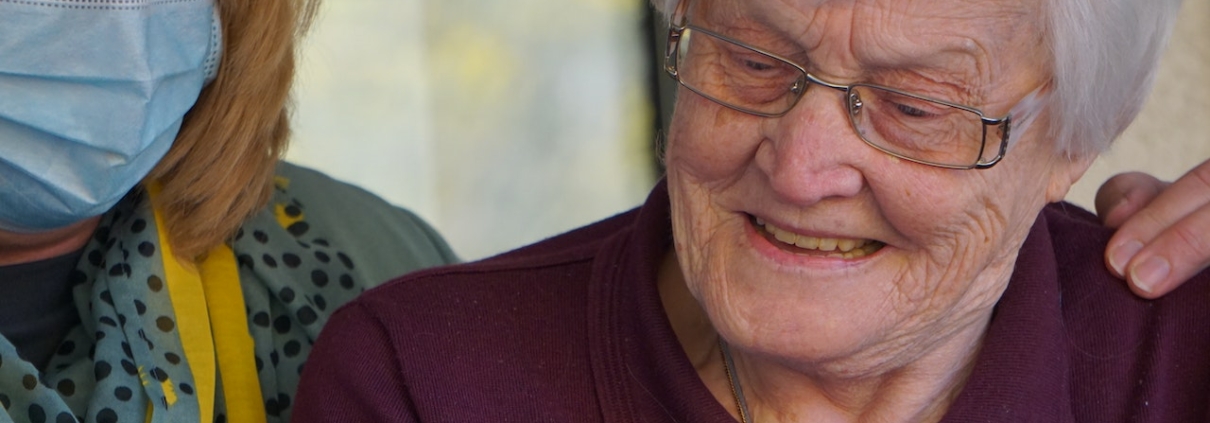Infection Control Procedures in Care Homes
Certain types of viral and bacterial infection are common in care homes, and infection is a major concern for care home patients.
The Department of Health and Social Care and Public Health England issued guidance on infection prevention and control in care homes.
This guidance is available as a comprehensive 102-page document, or as a 16-page summary. In this post we’ll provide a brief overview of the official government guidance for infection control procedures in care homes. We’ll also discuss some ways you can improve the procedures in your care setting.
Understand the Chain of Infection
The chain of infection refers to the process by which a care home resident might acquire an infection:
- The person at risk – All care home residents are at risk of infection. But some may be suffering from pre-existing conditions, and others may be immunocompromised. So some residents may be higher risk than others.
- The organism – Virus, bacteria, and fungus, including influenza, norovirus, Covid-19, and MRSA.
- The reservoir – The vessel or vector that could host the organism, including humans, animals, surfaces, equipment, and food and drink.
- Transmission – How the organism moves from one host body to a reservoir, including vomiting, sneezing, etc. As well as thinking about how an organism leaves a body, think about how it enters the body too – via inhalation, breaks in skin, or through mucous membranes (eyes, nose, mouth).
- Spread – How the organism spreads across the care home setting. Some organisms are spread via hand contact, while others are airborne.
Standard Infection Control Procedures
The government guidance advises a “simple, consistent and effective” approach to infection prevention and control in care homes.
This includes:
- Good hand hygiene, including following the correct hand-washing technique.
- Using the right PPE for the right purpose, including gloves, gowns, and aprons.
- Safe handling of sharps, waste, and soiled linen.
- Committing to a cleaning routine that meets the appropriate regulatory standards, making use of healthcare-grade cleaning products.
You can read our complete guide to standard infection control procedures for healthcare settings.
5 Moments for Hand Hygiene
The government guidance defines five key moments when care home staff should carry out hand hygiene.
These are:
- Before touching a resident.
- Before carrying out any clean or aseptic procedures.
- After any body fluid exposure risk. For example, after a resident sneezes in your vicinity.
- After touching a resident.
- After touching a person’s surroundings.
Patient Zoning and Isolation
Any patients carrying an infection risk may need to be isolated to prevent further infections. This became common practice in all healthcare settings during the 2020 pandemic, when any patients who tested positive for Covid-19 were placed separately from other patients.
The guidance advises making single rooms available for this purpose. It also stresses the need to consider the resident’s physical and psychological wellbeing. Keep the resident and their visitors informed both verbally and in writing. And ensure their environment contains hand hygiene facilities and, ideally, ensuite toilet and bathroom facilities.
Air Purification Systems for Care Homes
The government guidance on infection prevention and control in care homes is primarily focused on helping care home staff understand the risks of infection. It encourages care home staff to recognise infection risks, and act to contain them before they spread. But it also recommends policies, procedures and precautions to help make infections less likely from taking hold in the first place.
The guidance acknowledges that many infections that can spread through care home settings are airborne. Good air filtration can therefore make a huge difference in preventing and controlling even the most serious of infections in care homes. For example, one University of Cambridge study found that an air filtration system in a Covid-19 ward successfully removed almost all traces of the airborne virus.
Our range of air purifiers can make a huge difference in care homes and other residential care settings. They can trap up to 99.97% of particles down to 0.1 microns, and up to 99% of viruses and bacteria. This includes those microorganisms responsible for all of the most common outbreaks in care homes.
Want to talk about how we can help prevent infections and improve the air quality in your care home? Get in touch to talk to one of our air purification experts today.



